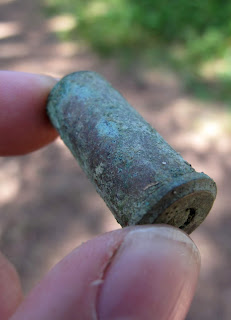I found it
more focused on the human perspective rather than the strictly military, which
it makes more easy, more attractive and more understandable for the target
audience, which is not strictly military but much wider.
People that
know what is in the box with the old cartridges doesn´t need any explanation,
the ones that they don´t know, they are not interested either.
Also the
exhibition makes very clear what kind of items you can find there if you go
digging: broken common items and very rusty cans, items without
"commercial interest", which will discourage people to dig illegally.
A detailed
operational map with the front lines and the position of the units that went
trough the camp and their names, are not necessary since it is a museum but not
a war museum, so the human dimension and the strength of the photos, Gerd´s
history and the pictures that shows mostly kids rather than victorious Arian
heroes from Signal magazines, helps to make people get closer to the history of
the camp.
I observed
some families with kids and retired people reading, watching, with a big
curiosity and respect.
I got the
information book in English! 🙂It is very well made, explains everything, it
is in a small format, all the info on the big pictures and good photos, easy to
read and to keep, and at a very affordable price.
There is
only two references to the SS in the exposition, and both are the same, the
photo of one soldier. I found the decision to be a good one, if someone is
interested, Internet nowadays explains everything, not necessary give to them
more protagonism.
Congratulations!
Jose Antonio Botella.


















































